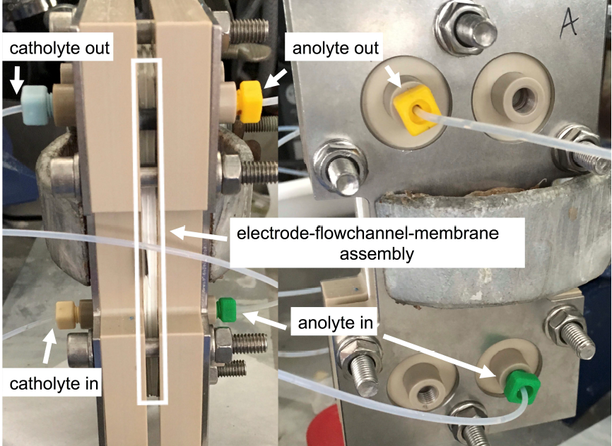Effective hydrogen production - Long-term stable water electrolysis through electrode coating
Ref.-No. 5194
Keywords: Catalyst, foil, electrode, surface
At the Ruhr University Bochum an effective method was developed with which the coating of an electrode can be achieved with high long-term stability, especially during electrolysis such as alkaline water splitting. Due to the coating of the electrode surface with catalytically active material, a significant reduction in the required cell voltage is achieved. The in-situ coating ensures that additional process steps for applying catalysts are omitted and the catalytically active electrode coating is continuously renewed. The catalyst materials suspended in the electrolyte can be recovered by filtration and recycled.
Conventional processes for coating electrode surfaces are based on the production of compact and thin catalyst films, for example by chemical vapor deposition, atomic layer deposition, sputtering or spray coating, which limits the number of possible catalysts. Powdered catalysts, which offer the advantage of an optimized structure, particle shape or size, typically have to be embedded in a binder, usually organic polymers, on the electrode. This, in turn, can negatively affect the properties of the catalyst. Furthermore, a possible passivation due to corrosion or contamination on the electrode leads to a decrease in the catalytic activity, which ultimately requires an exchange of the electrode.
The invention enables the in-situ coating of an electrode by means of catalyst powder from a suspension during the electrolysis operation, the catalyst film having a self-healing and thus long-term stable function, which always ensures constant catalytic activity and thus minimizes cost-intensive maintenance work. In addition, when coating the electrodes with powder catalysts, binders are not used and additional process steps for modifying the coating are not required.
Competitive Advantages
- Long- term stable electrolysis electrode
- Reduction in cell voltage
- Self-healing catalyst film
- Coating during operation via suspension
- No passivation due to impurities
- No binding agents required
Commercial Opportunities
The process for the electrode coating of a catalyst powder can be used in any type of electrocatalysis, especially the chloralkali and water electrolysis but also other applications in which electrodes have to be coated with powder catalysts would benefit from the innovative coating method.
Current Status
The invention has been registered for a patent and granted in Europe EP 3565916 B1. We would be happy to inform you about the status of the proceedings. On behalf of the Ruhr University Bochum, PROvendis offers interested companies licenses for the invention and the patent application.
Relevant Puclications
Overcoming the Instability of Nanoparticle-Based Catalyst Films in Alkaline Electrolyzers by using Self-Assembling and Self-Healing Films, Stefan Barwe doi: 10.1002/anie.201703963.
—
An invention of Ruhr-Universität Bochum.



